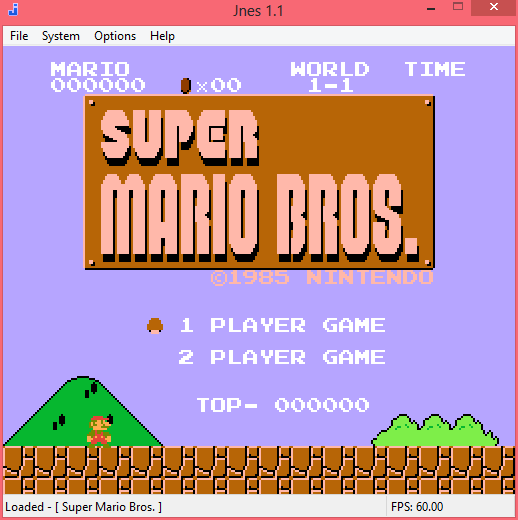Nes-py is an NES emulator and OpenAI Gym interface for MacOS, Linux, and Windows based on the SimpleNES emulator. Installation The preferred installation of nes-py is from pip. Snes8x is a Super Nintendo emulator for Windows 8 and Windows RT. The app is based on Snes9x, a free and portable SNES emulator. It features support for virtual touch controls and keyboard input.
In the world of gamers, there is a wide range of possibilities to play games, even the discontinued versions of them. Here are a few NES emulators which are up to their standards.
RockNES
One of the best emulators in the market is RockNES. It is still supported by the developer and gets frequent updates and bug fixes. It works smoothly and has the right amount of features compared to other emulators in the market.
Advantages:
- Well built graphics for PC support.
- Adjustable screen size and full HD support.
- Exclusive Eagle mode which enhances the usability to a whole.
- This is one of the modern emulators available in the market.
Contents
Dolphin

I would consider this emulator to be worthy of its second rank in this list because of these following features.
Advantages:
- Active developer support and updates roll out frequently.
- Fullscreen and HD support
- Nintendo wifi link.
- Available in Mac and Linux also (native windows support).
Disadvantages:
- Driver bug with NVIDIA graphics on the DirectX.
- D3D driver bug.
NESBox
NESBox supports all Super Nintendo and GameBoy games. It is a browser oriented emulator.
Advantages:
- It comes with predefined controls mapped to the keys.
- Supports local multiplayer.
- Save the game at any point.
Disadvantages:
- It runs only in the browser.
- Microsoft account is required to save/load games.
RetroArch
It enables the user to get hands-on their favorite games on a wide range of computers and consoles.
Advantages:
Nes Emulator For Windows 8.1
- It supports the latest cores.
- It has an advanced graphical interface.
- Multiple platform support.
Disadvantages:
- Difficult to set up the emulator.
FCEUX
It is an open-source NES emulator. It is a merger of various forks of FCEU ultra.
Advantages:
- Supports playback feature.
- Custom ROM and hacking features.
Disadvantages:
- Colour palette is terrible though
jNES
It is an original 8-bit NES emulator.
Advantages:
- This emulator has adjustable graphics and sound profile.
- It supports joysticks.
Disadvantages:
- Although with these features, the emulator lacks some of the necessary functions.
VirtualNES
It is a Japanese emulator with advanced features. Anyhow it is in Japanese. If you want an English version, you have to search harder. Fortunately, you can find one in the emulator zone.
Advantages:
- It has joystick support.
- Full-screen mode is available.
- You can use cheat codes.
Disadvantages:
- Sadly there isn’t any developer support for this emulator.
NestopiaUE

It is also an open-source emulator. It has been ported to Mac OS lately. So if you’re a Mac user, no worries.
Advantages:
- Supports external devices.
- Screen size options are available.
- Native in-app screen recording.
- Multiplayer support and auto-saving features.
Disadvantages:
- The developer support was discontinued back in 2008, so no updates can be expected.
Best Nes Emulator Windows 8.1
Removing this code simplified the platforms to test, but it didn't make up for the the amount of time spent with the Storage Access Framework. The SAF as it is called, was introduced in Android 4.4 KitKat as an alternative way to access storage compared to the standard Java File class. The idea being that by introducing another abstraction to files and folders based on a
Uri, Android could provide better security and extend storage beyond the local file system to any provider. To me at least this didn't become usable for general purpose storage browsing until Android 5.0 Lollipop with the introduction of the ACTION_OPEN_DOCUMENT_TREE flag which allowed developers to make entire directories available to applications, like Jnes.While I successfully ignored this for many years! It became obvious in 2018 (when Google Play required developers to target newer versions of their SDK) that most newer phones were preventing access to the file system outside of the Storage Access Framework, which of course broke Jnes for Android. Over the course of more than two months, and a lot of frustrated users, I was able to switch over to the new storage framework. The rewrite was definitely worth it as the new storage framework, combined with new user experience on startup in Jnes made things much easier.
I'm happy to say that the Jnes release from April 2019 marked a stable chapter for Jnes on Android. If you gave Jnes a try previously and ran into problems I would suggest trying it out again, it may work better. Overall developing anything of significant quality for a mobile platform is a lot of work, I will be avoiding it for any projects I work on for personal enjoyment.
Here are some technical reflections and things that I learned about Android storage:
- I didn't really ever think about how much storage access was there until I had to rewrite it all
- If you need to support older phones you need two sets of storage code
- The helper class for
DocumentFileis generally not as easy to use as Java's traditionalFileclass SingleDocumentTreeis missing functionality that you may need- Every storage provider may decide to just not implement some functionality
- You can't rely on being able to parse the storage
Uri, although most people rightfully try to
